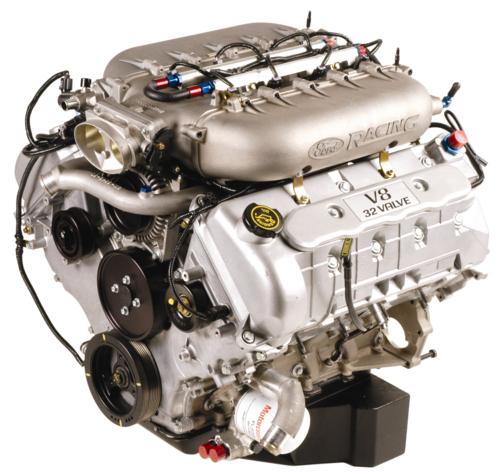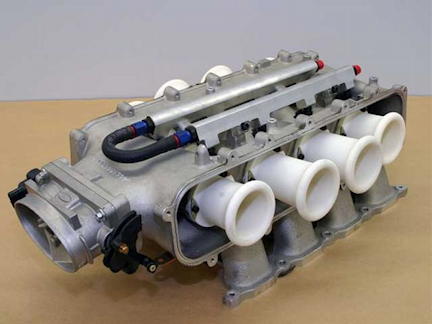Quote:
Originally Posted by Gaz64

Any form of vacuum can plumbed to all runners is only to supply a more steady vacuum signal for MAF sensors, and for power brakes.
It does nothing for reversion since the takeoff port is insignificant in comparison to the inlet port area.
Some manifolds come with the bottom sealed off with a removable plate, where the runners are connected by a small about 3/16 port.
That volume then becomes a large damper to give steady pulsation-free signal strength to MAFs, etc.
Gary
|
The size of the under port balance tubing can impact the signal muting capability however, once you get up to somewhere around a 0.250" to 0.3125" tubing orifice ID and a sufficiently large vacuum accumulator the majority of the reversion pulsation can be mitigated, not eliminated but virtually eliminated.
The challenge of using a MAF gets into additional creative fabrication and plumbing. Somehow you need to seal all eight of the intakes to a common feed plenum that has a single vent to atmosphere. That vent must house a MAF sensor and air cleaner. Not impossible to do but a not an insignificant design and fabrication challenge.
An interesting variation would be to eliminate the eight individual throttle butterflies and use only a single throttle between the MAF and the common plenum. The streamlined port entry w/o the throttle blade hardware for the eight throttles could easily improve cylinder breathing and therefore engine volumetric efficiency with obvious horsepower improvements.
Ford took the clear individual runner approach on their FR500C road race engine, building the intake manifolding similar to the design I just described. this is what it looked like on the engine with the plenum covers in place;

This is what the manifold looks like with the plenum covers removed;

The individual runner length could be adjusted to tune the engine power to differing rpm bands depending on the track.
Later when Ford went Daytona Prototype racing in 2012 a next generation version of the same intake design was used but fabricated in carbon fiber to reduce weight. The work was done primarily at Roush-Yates and not surprisingly there doesn't seem to be a lot of pics of the engine or it's components available. This is one of the few examples out there;

By mid 2011 the engine was being groomed to go head to head with GM, BMW and other factory teams at the 50th running of the Rolex 24 in Daytona. The intake runners had been shortened, straightened and married up to a new plenum. That January despite all the smart guys betting on the likes of the Factory BMW and Corvette entries to win the event Roush-Yates swept the field cleaning everybody's clock and delivering a 1,2,3 finish reminiscent of Le Mans decades earlier.
In each of these implementations the challenge with using a MAF based EFI with IR style intakes was always the same. Somehow you had to get all the intake runners to draw from a common plenum. Ford had long since dropped the throttle blade per port configuration in favor of individual tuned runners and a single throttle body with a MAF in front of it.
For vintage appearing replicas like ours, we want to see the throttle bodies and eight stacks so barring someone coming up with a really creative approach, the EFI systems will of necessity end up having to use a speed density based fueling model. Although a MAF based system brings some nice benefits the speed density style fueling model does a very good job and is much easier to implement on our cars using IR style intakes.
Ed